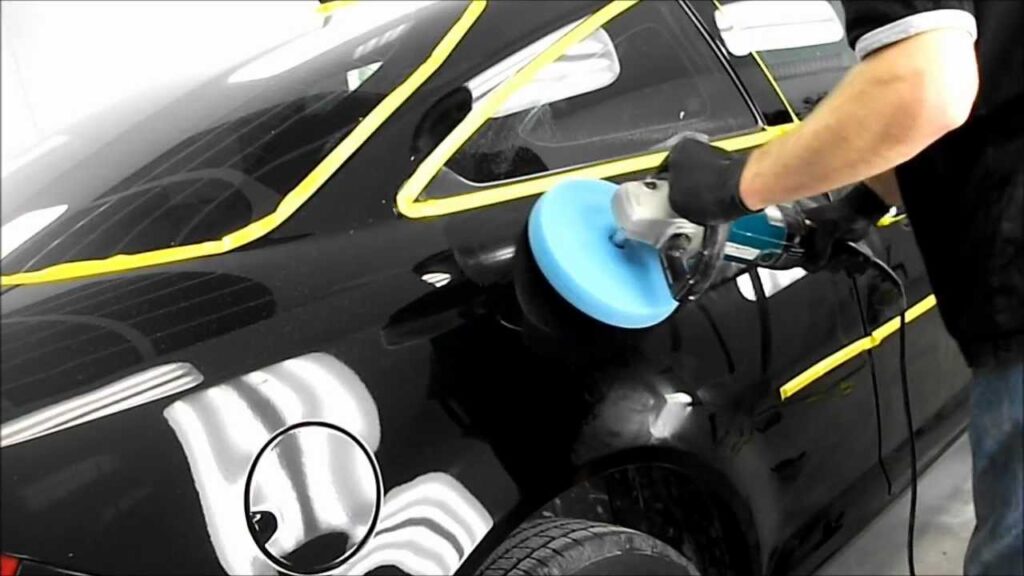Introduction to Car Paint Correction
Have you ever noticed fine scratches, swirl marks or a dull finish on your car’s paint? These imperfections can make even a brand-new vehicle look aged. That’s where car paint correction comes into play. It’s not just about polishing—it’s a meticulous process designed to restore your car’s paintwork to its original, showroom-like condition.
By the end of this guide, you’ll understand what paint correction is, why your car needs it and how it can significantly improve your vehicle’s value and appearance.
Understanding Car Paint Imperfections
What Causes Swirl Marks and Scratches?
Most swirl marks and scratches aren’t from accidents—they often come from improper washing techniques, dirty sponges or automated car washes.
Common Paint Defects Every Car Faces
-
Oxidation due to sun exposure
-
Water spots and acid rain damage
-
Bird droppings and tree sap etching
-
Micro-marring from dust and debris
All these degrade your car’s paint, making correction essential.
What is Car Paint Correction?
The Science Behind Paint Correction
Paint correction involves removing a thin layer of clear coat to level out imperfections. Using specialized compounds and polishing machines, professionals carefully restore clarity and gloss.
Different Levels of Paint Correction
-
One-step correction – Light defects removal
-
Two-step correction – Medium defects and improved gloss
-
Multi-step correction – Severe imperfections, deep restoration
Benefits of Car Paint Correction
Restores Original Gloss and Shine
Paint correction removes years of damage, making your car look new again.
Improves Vehicle Resale Value
A flawless paint job increases buyer interest and trade-in value.
Prepares Surface for Ceramic Coating or PPF
Paint correction is a prerequisite before applying ceramic coatings or Paint Protection Film (PPF).
Enhances Long-Term Paint Protection
Corrected paint reduces the risk of future oxidation, staining and clear coat failure.
Paint Correction Process Step-by-Step
Initial Assessment and Paint Inspection
Detailers measure paint thickness and identify defects.
Washing and Decontamination
Removes dirt, tar and iron particles that can damage the surface.
Compounding and Polishing
Multiple polishing stages eliminate swirl marks, scratches and oxidation.
Finishing and Sealant Application
The process ends with a protective sealant or wax to maintain results.
DIY vs Professional Paint Correction
Pros and Cons of DIY Paint Correction
-
Pros: Cost-saving, personal satisfaction
-
Cons: Risk of damaging paint, limited tools, less durable results
Why Professional Detailers Are Worth It
Experts use advanced tools, years of experience and guarantee flawless results without risking your car’s paint.
Tools and Products Used in Paint Correction
Machine Polishers and Pads
Rotary and dual-action polishers ensure precise defect removal.
Compounds, Polishes and Sealants
Professional-grade products refine and protect your car’s finish.
How Often Should You Do Paint Correction?
On average, once every 2–3 years depending on driving conditions, storage and maintenance habits.
Myths About Paint Correction
-
Myth 1: Paint correction is the same as waxing.
-
Myth 2: It damages your clear coat.
-
Myth 3: New cars don’t need correction (many come with dealership-induced swirls!).
Cost of Paint Correction
Factors That Influence the Price
-
Car size and paint condition
-
Number of correction steps needed
-
Location and detailer’s expertise
Is It Worth the Investment?
Yes—paint correction boosts resale value, extends paint life and makes your car look stunning.
FAQs About Car Paint Correction
1. What exactly is paint correction?
Paint correction is the process of removing imperfections from the paint surface using machines and polishes.
2. Does paint correction remove deep scratches?
It removes light to moderate scratches, but deep cuts may need repainting.
3. How long does paint correction last?
With proper maintenance, results can last 2–3 years.
4. Is paint correction safe for all cars?
Yes, when done by professionals with proper paint thickness measurement.
5. Do new cars need paint correction?
Yes, even new cars often have swirl marks from transport or dealership cleaning.
6. Can paint correction be combined with ceramic coating?
Absolutely. In fact, correction is highly recommended before applying ceramic coatings.
Conclusion
Car paint correction isn’t just a cosmetic upgrade—it’s a long-term investment in your vehicle’s beauty and value. From restoring gloss to preparing your car for protective coatings, the benefits are undeniable. If you want your car to look showroom-ready, professional paint correction is the way to go.
Visit Us: Behind Sadhana Bank, Behind Amanora Town Centre, Malwadi, Hadapsar, Pune, Maharashtra 411028
Call: 7070346464
Email: enquiry@glosszilla.com


